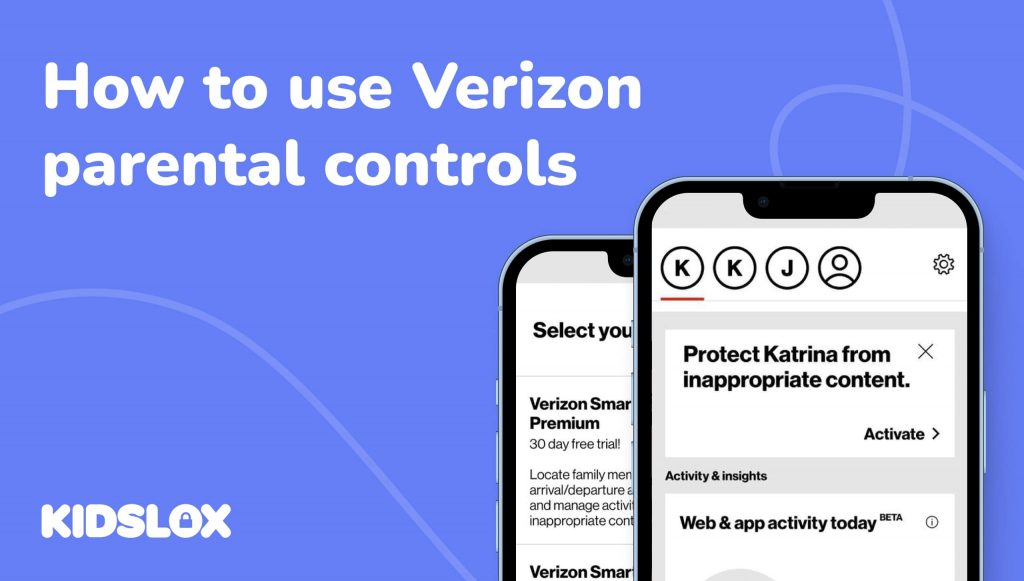Today’s children aren’t just growing up around technology – digital devices and their effects have become ingrained in their daily lives. The reality of always-on, internet-connected devices means parents must take proactive steps to ensure their children are safe in the digital world.
Let’s be clear – digital devices are fantastic for shrinking our world and bringing access to education, entertainment, and communication. But they also open up risks: online predators, cyberbullying, excessive screen time, and accidental exposure to dangerous online content.
Here are some stats that may surprise parents and guardians when it comes to digital devices and our children:
- The Erikson Institute found that 85% of parents allow their children under age 6 to use technology at home – a number that has climbed and stayed high post-pandemic.
- A Pew Research Center study found that 67% of parents reported giving their children access to tablet devices.
- Studies have shown that using electronic devices too much can negatively affect a child’s learning and ability to self-regulate.
Now, trying to avoid digital devices completely can feel like a losing battle. Instead, parents and guardians should focus on protecting their children while allowing them to explore and engage with the digital world safely.
The best way to do this is by creating a family security plan before handing over any device – be it a smartphone, gaming console, or laptop computer. A family security plan – when designed around key safety principles – can provide an effective way to manage and monitor digital activity.
What Is A Family Security Plan?
As a parent or guardian, do you have a plan in place to protect your child’s physical health and well-being? While your specific safety steps may vary, most parents will:
- lock access to harmful chemicals, firearms, and other dangerous items
- teach their children about water safety in the swimming pool
- install smoke detectors to alert them of fire emergencies
- reinforce the importance of pedestrian safety when crossing streets
We often don’t think about these common safety measures because they seem so obvious. Yet when it comes to digital safety, many parents don’t have a plan in place – even though the risks and consequences can be just as serious.
A family security plan is designed to provide your children with the same level of protection from digital threats as you would give them for physical ones. It helps you create a safe online environment by providing guidelines on what types of content are allowed, monitoring their online activities, and setting rules for how they can interact with others.
The Importance of a Family Security Plan
A comprehensive family security plan is key to maintaining a safe and secure digital environment for your family. Some of the main reasons to develop such a plan include:
- Identity protection: With widespread data breaches and various online threats, it’s crucial to maintain family security on the internet to protect your identity and financial details
- Child safety: By implementing a family security plan, you can protect your kids from malicious online content and interactions, preventing cyberbullying and other dangers
- Privacy: An effective plan can protect family members from having their sensitive information accessed or used without their permission
- Responsible device usage: Establishing rules for appropriate device usage ensures your family maintains a healthy balance between screen time and other activities.
While each family security plan will include basic safety measures, your plan should be tailored to meet the needs of your family. Let’s break down each area of digital safety and how you can create a plan to keep your family secure.
Creating a Family Security Plan to Keep Your Kids Safe Online
When it comes to creating an effective family security plan, you can take various steps to ensure online safety for everyone in your family. Remember, these steps should exist to scare your child or teen from using the internet but rather to provide guidance and protection.
Let’s take a look at some of the key areas of focus that should be addressed in your security plan:
Education About Digital Family Security
Every successful family security plan should include a strong emphasis on education about digital safety. As the internet continues to evolve, it’s important that everyone in your family understands the potential risks they may face online and how to avoid them.
Be sure to discuss these topics with your children:
- Online privacy: Teach your kids about the importance of maintaining an appropriate level of privacy when using online services, such as social media or email. Help them understand why it’s essential to keep their accounts secure and not to share personal information with strangers.
- Cyberbullying: Explain the dangers of cyberbullying to your kids and how they can protect themselves from becoming victims. Discussions about cyberbullying should also include guidance on what to do if they or someone they know is facing online harassment or abuse.
- Phishing scams: Help your kids understand what phishing is and how to spot suspicious emails or other online activity. Offer examples of seemingly harmless scenarios that could have potentially damaging consequences.
- Malware & Viruses: Show them how to recognize malicious websites and links that could lead to the spread of viruses and other malicious software. Explain the importance of using strong passwords and other cybersecurity measures to stay safe online.
Establishing Clear Rules & Consequences
Once your family understands the what of digital security, it’s crucial to establish clear rules for online behavior.
This includes establishing an acceptable level of internet usage and setting limits on social media access. It’s also important to decide what types of content are appropriate and those that should be avoided or blocked.
Be sure to include consequences in your plan that will be enforced if the guidelines aren’t followed. These may vary depending on the age of your children – as well as the severity of any online infractions – but should be consistent and appropriate.
Establishing a system of rewards for following the rules can also be a great way to encourage good digital behavior.
Utilizing Parental Control Tools and Other Resources
While we can take every step to help protect our children and families from harmful online activities, it’s important to remember that no safety measure is foolproof. That’s why parental control tools and other resources can help safeguard against potential risks.
There are a variety of services available – both free and paid – that parents can use to set appropriate boundaries for their children while they’re online.
Parent control tools and apps offer a variety of features that can be used to monitor and manage online activities. These can include setting time limits, blocking websites or keywords from search results, and even tracking the location of family members.
When using these tools, be sure to review them regularly to ensure they remain effective at keeping your family safe.
Whenever you add a parental control or content filtering tool to your family security plan, talk to your children about why you’re doing so. Allow them to ask questions and explain the importance of following online safety guidelines. This will help them understand the risks of engaging in certain activities and help them make positive decisions when connecting with others online.
Stay Up-to-Date & Lead by Example
Staying up-to-date on new cyber threats, technologies, and tools is critical to ensuring your family remains safe online.
But most importantly, be sure to lead by example for your children. Show them the importance of being responsible in their online activities and treating others with respect.
Remember, teaching your kids digital safety is an ongoing process – it’s not a one-time lecture. Being active in monitoring what they do online can help establish trust and build stronger relationships between you and your children. Through responsible online behaviors, your family can enjoy the benefits of technology while staying safe.
Add Kidslox To Your Family Security Plan to Maximize Your Digital Safety
Creating a family security plan is essential to keeping your loved ones safe and secure in today’s digital world.
By being proactive and implementing a comprehensive plan, you can protect your family against online threats, maintain privacy, and foster responsible device usage. Over time, your children will begin to learn how to safely navigate the digital world, while you can rest assured that they’re protected.
To enhance your family’s digital safety, consider adding Kidslox to your security arsenal.
A robust parental control and digital safety application, Kidslox offers rich features to help you manage your family’s device usage, block unwanted content, and filter out potential online dangers. A single account controls all devices, making it easy for you to manage your family’s digital safety from any location.
Learn more online about how Kidslox can help you create a safe and secure digital environment for your family. With Kidslox, you can ensure that your loved ones stay safe online no matter where they are. Start taking control of your family’s digital safety today!





